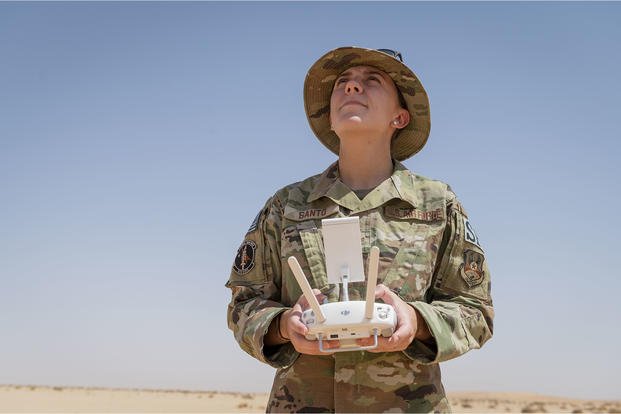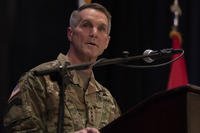HURLBURT FIELD, Fla. -- "Off we go into the wild blue yonder ..." begins the U.S. Air Force song, but airmen at the 1st Special Operations Security Forces Squadron aren't leaving all the flying up to traditional pilots.
Approximately one year ago, the 1st SOSFS began a small unmanned aerial system program to operate the RQ-11B Raven. The Raven platform looks like a toy airplane and weighs less than five pounds. Despite appearances, it's equipped with surveillance capability and is designed to be launched by hand to enable covert missions.
The airmen initially train in a two-week course at the Joint Formal Training Unit at Choctaw Field, Fla., which is operated by the 371st Special Operations Combat Training Squadron. SUAS instructors within the unit attend an additional one-week course to learn more technical aspects of the platform.
"The course goes over characteristics of the aircraft, capabilities and different ways you can use it, like from inside a vehicle," said Staff Sgt. David LeBlanc, 1st SOSFS deployed air ground response element team leader.
After training, security forces members must keep their skills sharp through regular simulator and live-flight training. It may appear operators are logging time on their favorite gaming system, but the video game-like controller remotely navigates the SUAS for simulator and live flights.
While the simulator allows fliers to practice navigation, there are elements that airmen perfect during live flights.
"When you're doing it live, you ensure you're throwing and landing the bird the correct way and are aware of other aircraft in the air space," LeBlanc said.
The SUAS program fits with existing security forces missions.
"I've deployed four times, and I could see this helping in that environment," LeBlanc said. "Usually you have manpower going out and doing physical perimeter checks, but this is an asset we can use to mitigate having people right on the fence line."
The remote surveillance capabilities of the RQ-11B Raven also have potential to be used to survey damage from natural disasters such as hurricanes. For security forces teams who travel outside the wire, SUAS can give eyes on the route ahead.
"We've had individuals lost out on the range, and we can easily put this up and search for people instead of using a larger platform," said Tech. Sgt. Matthew Coutts, 1st SOSFS SUAS program manager. "You could do route reconnaissance, conduct a visual assessment of a target or have over-watch of a team moving through a populated area."
Use of SUAS has the potential to mitigate safety risks for security forces airmen.
"You'd rather lose a piece of equipment than send a team in harm's way," Coutts said.
For the growing number of security forces airmen qualified to pilot SUAS, it's a career-broadening opportunity that allows them to step outside their regular roles.
"We get to do something outside of the normal element of security forces," LeBlanc said. "Usually security forces arms up with weapons, checks IDs or patrols the streets, but with this, you get to do something a lot of people don't get to do. This just shows security forces are a jack of all trades."
Want to Know More About the Military?
Be sure to get the latest news about the U.S. military, as well as critical info about how to join and all the benefits of service. Subscribe to Military.com and receive customized updates delivered straight to your inbox.











